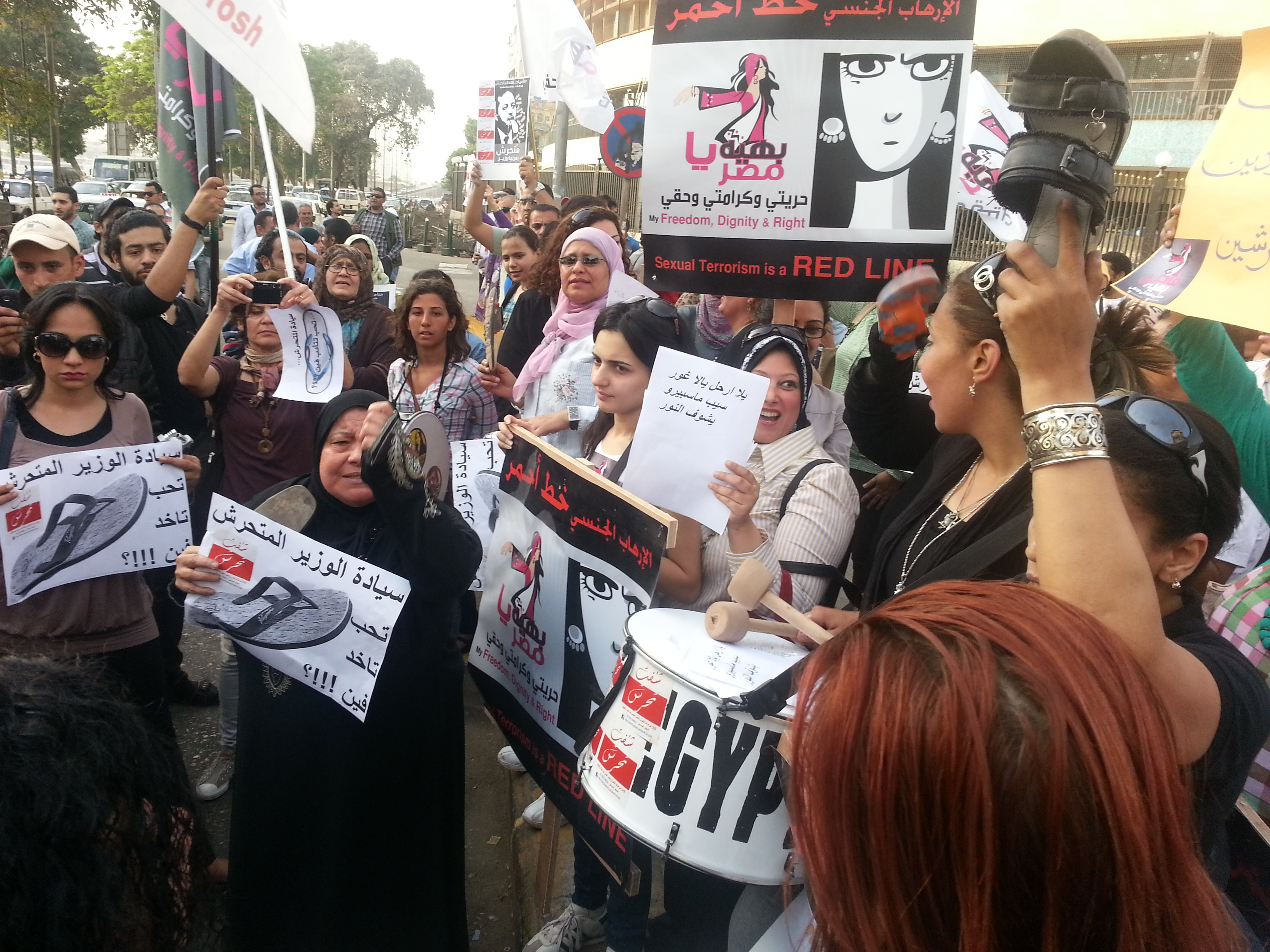The Egyptian Modern Dance Theatre Company presented its latest production, “Women of Kasem Amin at the Opera House’s Gomhoryia Theater this week.
Walid Aouni’s ambitious project to present major figures from Egyptian contemporary history previously paid homage to modern sculpturer Mahmoud Mokhtar and filmmaker Shadi Abdel Salam.
The theme of the current production, apparent in the title of the performance, is the work of Kasem Amin, the Egyptian social thinker of the late 19th century, whose books “Women’s Liberation and “The New Woman sparked controversy in Egyptian society at the time, because of his call for women to remove the traditional face cover and participate more fully in society. This call was directed to the upper middle class women, as most working women, whether in rural or urban areas, never covered their faces to begin with.
Aouni’s program notes describe the task he sets out to achieve. “In dealing with a historical figure like Kasem Amin, our performance should not only focus on his defense for women or his analysis in his two books. . But it should reveal the beginning of a new social, political, religious, and cultural age. A formidable task for a dance performance.
The performance starts with a haunting image of nine women in long black dresses, their heads covered in black fabric that extends from their faces to the top of the stage. The stretchy tubes of fabric elongate the bodies of the slender performers further and allow them a limited range of movement, creating a phantom feel.
There is no logical continuum in this dance performance that claims to represent the history of modern Egyptian women. The sequencing of dances was baffling. After the female dancers remove their hair covers, and dance a couple of numbers with their hair showing, they appear with their faces covered again.
When the women remove their head covers, they start to move hysterically across the stage and mimic shouting at the men. They run and fall under the feet of the men in hysterics. When the director literally projects the names of Egyptian beacons of the women s liberation movement in Egypt like Hoda Shaarawi, Safia Zagloul, Bahethat Al-Badya and May Ziada on the back of the stage, it is not befitting to play to the flawed Freudian rhetoric that saw women as hysterical because of Freud’s erroneous judgment on the case of Dora.
Once the female dancers are “liberated they perform in a style that flirts with the notion of a harem, the furthest thing from Kasem Amin’s ideology.
It’s understood that most modern dance stems from the ego of the dancer or is a representation of it. But Aouni’s ego pushed him into unforgivable indiscretions. In the Arabic program notes he writes that the woman was “nothing before “Kasem Amin gave her the responsibility of motherhood, nation and the future. Who, in their right mind, can reduce the role of women in any society to “nothing ? Who can deny the struggle of women for generations? Its seems Mr Aouni does.
The second major faux pas was in the middle of the performance, when the women create a circle on stage, and the director/choreographer stands in the middle of the circle in a heroic posture. After a few still moments, the music changes to disco beats and Aouni starts to move vigorously, as if he is an uncoordinated child expressing his anger. He rolls his arms and jumps up and down, in an immature metaphor denoting shaking the status quo. So now it’s not Kasem Amin who’s liberating the women; it’s Walid Aouni, and this liberation will happen through a juvenile disco dance.
This dance performance only pays lip-service to the liberation of women, but many of the images it offers show women as subordinate or helpless. The examples are numerous. After the female dancers remove their vertical connection to the roof, they are moved around by the male dancers who seem to dress them as if they are lifeless mannequins, placing clothes on their extended arms, or covering their faces.
Toward the end of the performance, the female dancers appear in colorful dresses, and dance in couples with the men, who eventually sit on the ground, under the feet of the women who shake their hips, reducing the liberation of women to belly dance.
Though the ideas are problematic, “Women of Kasim Amen has some interesting visuals: the contrast of the colors with black and white, the trick of the cut-out dolls in black – when turned they show happy floral patterns – as well as the light design.
Light created a window-like effect at the back of stage. Later these “windows were used by some of the dancers, who were back-lit, to present their moving shadows. Unfortunately, the program, that has a long list of the director’s achievements and awards, does not list the name of the light designer.
This could have been an acceptable dance performance, with some reservations, if it did not insist on accomplishing what it is not capable of, namely presenting the “new social, political, religious and cultural age. Relying only on the vision of someone who is not a visionary wasted the energy of the well-trained young dancers, who executed the dance routines with excellence. They could have shone more brightly in a performance with an authentic vision.

